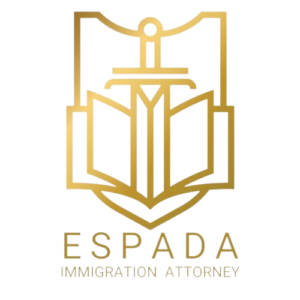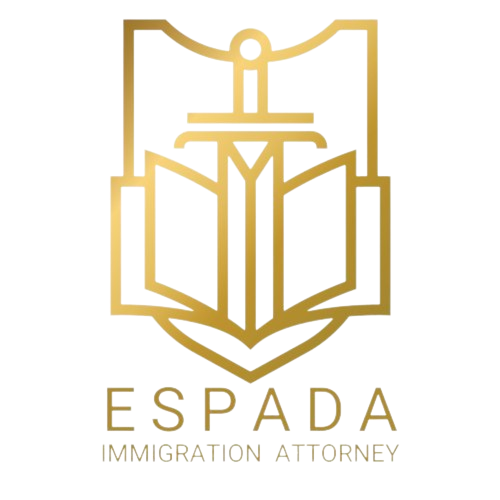F1 Visa Comprehensive Guide : All You Need to Know
F1 Visa Comprehensive Guide : All You Need to Know

Students planning to study in the United States should consider applying for the F1 visa. This is a temporary, non-immigrant visa that permits students to engage in a full course of study for the duration of their academic program.
If you have questions or require assistance with your F1 visa application, don’t hesitate to contact me at Abbas@espadaimmigration.com.
- Introduction to the F1 Visa
- F1 Visa Benefits
- F1 Visa Requirements
- F1 Visa Process
- F1 Transfer and Withdrawal
- F1 Employment on Campus
- F1 Remaining in Status during Summer and Illness
- F1 CPT and OPT
- Change of Status
- F1 Extension of Stay
- Conclusion
1. Introduction to the F1 Visa
The F1 visa is a vital option for students who want to study in the U.S. It is primarily designed for individuals pursuing undergraduate, graduate, or vocational studies.
To begin the process, you must first be accepted into a program at a school that is approved by the Student and Exchange Visitor Program (SEVP). Afterward, you will need to register with the Student and Exchange Visitor Information System (SEVIS), which will allow the issuance of your I-20 form. You’ll also need to pay the SEVIS fee (Form I-901) before proceeding with the application.
2. F1 Visa Benefits
Pursue a Degree in the U.S.
The F1 visa allows you to study in the United States, home to some of the world’s top educational institutions.Family Accompaniment
Your spouse and children can join you on F2 visas, and they will receive their own I-20 forms. Your children in F2 status may attend school full-time if they are in grades K-12, and your spouse and children over 12th grade can study part-time. They may also switch to an F1, J1, or M1 visa if they wish to attend school full-time.Employment Opportunities
You can work while studying and even after graduation. This will be detailed further under F1 Employment on Campus and F1 CPT/OPT sections.No Cap on F1 Visas
There is no limit to the number of F1 visas issued each year, so you do not need to participate in a lottery.Travel Flexibility
With approval from your Designated School Official (DSO), you can travel internationally while maintaining F1 status, provided your I-20 form remains valid.
3. F1 Visa Requirements
Full-Time Enrollment
You must be enrolled as a full-time student. For undergraduate and university students, this typically means taking 12 semester or quarter hours. You may take one online course as long as it’s not an English course. You may not reduce your course load without prior approval from your DSO, although in some cases, a reduced course load may be granted for medical reasons.Intent to Return
You must show your intent to return to your home country after completing your studies. The F1 visa is a non-immigrant visa, and you cannot use it as a direct route to a green card. If immigration authorities suspect that you plan to overstay your visa, your application may be denied.No Public K-12 Education
Public elementary, middle, and high school attendance is not permitted under the F1 visa, although you can attend a public K-12 school for up to one year if you reimburse the school for the cost of your education.Proof of Sufficient Funds
You must demonstrate that you have enough financial resources to support your education and living expenses while studying in the U.S.English Proficiency
You must be proficient in English unless the school explains why it’s not required, often due to English language training programs.Academic Qualifications
You must meet the academic requirements of the institution, such as holding a foreign equivalent of a U.S. high school diploma for undergraduate programs.Maintain Contact with Your DSO
You are required to maintain regular communication with your DSO for various reasons, including applying for work, changing your major or program, transferring schools, taking a leave of absence, traveling internationally, or changing your address.Entering the U.S. on a B1/B2 Visa
If you are entering the U.S. on a B1/B2 visitor visa, you must still apply for the F1 visa from abroad and then re-enter or file for a change of status.Grace Periods
You have a 30-day grace period before your program starts to arrive in the U.S., and after completing your program, you are allowed a 60-day grace period to leave the U.S.Health Insurance
Although health insurance is not required by law, many schools mandate it for their students, so you should check your school’s policy.Changing Degree Programs
You can change your degree program or pursue a higher level of study without filing a new F1 petition, as long as you inform your DSO.
4. F1 Visa Process
Obtaining an F1 Visa involves several steps. Below is an overview followed by a detailed explanation:
- Apply to the school and obtain Form I-20
- Complete Form DS-160
- Gather documents for the visa interview
- Attend the visa interview
- Present yourself at the port of entry
Apply to the School and Obtain Form I-20
After being accepted into a U.S. institution, you will receive the SEVIS Form I-20. This form contains essential details such as your personal information, the school’s information, your program of study, and financial details. If you have F2 dependents, they will need their own I-20 forms as well.
Complete Form DS-160
You and any accompanying dependents are required to complete the DS-160 form before scheduling a visa interview. You will need to upload a photo with the form, or bring one to the interview. Depending on the country, there may also be a visa issuance fee.
Document Gathering for Visa Interview
The following documents are necessary for the visa interview:
- Proof of payment for visa fees
- A valid passport for at least six months
- Transcripts, diplomas, or certificates from previous educational institutions
- Standardized test scores required by your U.S. school
- Documents demonstrating your intent to leave the U.S. after completing your studies
- Proof of funds to cover tuition, living, and travel expenses
Visa Interview
During the visa interview, the consular officer will assess your eligibility for the F1 visa. Biometrics may be required at a separate appointment, typically a day or two before the interview. If the interview goes smoothly, you may be asked to pay an additional visa issuance fee.
Presenting Yourself at Port of Entry
Upon arriving at a U.S. port of entry, you will need to seek approval from Customs and Border Protection (CBP). Ports of entry include airports and land border crossings. You must present your passport, visa, and Form I-20 for inspection. The CBP officer will decide whether to admit you to the U.S. and will provide an admission stamp or Form I-94 Arrival/Departure Record.
5. F1 Transfer and Withdrawal
Who Can Transfer
You are allowed to transfer to another school as long as the following conditions are met:
- You must be a legitimate student.
- You must have been pursuing a full-time course of study.
- You must have adequate funds to support the transfer.
- You must start at the new school within 5 months of leaving your current school or the completion of your program, whichever comes first.
- You must request that your SEVIS record be transferred within 60 days of completing your program.
- You must not have engaged in unauthorized employment.
How to Transfer
To transfer schools:
- Notify your Designated School Official (DSO), who will release your SEVIS record to the new school.
- Obtain a new SEVIS I-20 from the transfer school.
- Inform the new DSO within 15 days of starting at the new school.
- Your transfer is only complete once the new school reports your enrollment to SEVIS.
Failure to follow these steps may result in a loss of your status.
Withdrawing from an Institution
If you need to withdraw from your current school, request formal approval from your DSO. You will typically have 15 days to leave the U.S. after withdrawing. If you withdraw without DSO approval, you won’t receive a grace period. To return to study, you must apply for a new I-20 and pay the SEVIS fee again.
6. F1 Employment on Campus
During your first year in the U.S., you can only work on-campus. This work can involve providing services to students or engaging in research at a school-affiliated worksite. Your DSO must approve this employment in advance.
If you transfer to another school, you will need to submit a new work request to your DSO before beginning any work.
Off-campus employment is allowed after your first year, but only under certain circumstances, including:
- Unforeseen economic hardship beyond your control, allowing you to work up to 20 hours a week while school is in session, and full-time during breaks.
- If you are from a country for which the Department of Homeland Security has suspended employment restrictions (e.g., Indonesia, South Korea, Thailand, Malaysia, Philippines).
- Special programs may be available for students from countries experiencing natural disasters or civil unrest.
- If employed by a recognized international organization.
7. F1 Students Remaining in Status During Summer and Illness
As long as you intend to return to school in the next term, you will remain in status during the summer break.
If you fall ill and need to take a reduced course load or temporarily leave school, you will remain in status until you recover and return to your studies.
8. F1 CPT and OPT
Curricular Practical Training (CPT)
CPT refers to any internship or practicum that is an essential component of a student’s academic program and can be undertaken either part-time or full-time. It’s important to note that part-time CPT will not impact your eligibility for OPT (Optional Practical Training), which is discussed below, but engaging in 12 months of full-time CPT will make you ineligible for OPT. To qualify for CPT, you must have completed at least one year of academic study in your program. Additionally, you must have a job offer before applying for CPT, which must be submitted through a Designated School Official (DSO).
Optional Practical Training (OPT)
OPT provides international students with the opportunity to gain temporary employment related to their field of study. It can be utilized either before finishing the program, during periods when school is not in session, or part-time during the academic term. Note that any time spent on pre-completion OPT will reduce the available time for post-completion OPT.
To apply for OPT, you must do so within 90 days of completing your academic program or within 60 days of your program’s end date. A job offer is not required to apply for OPT.
The DSO must recommend your OPT in the SEVIS system, and you will need to submit your SEVIS I-20 form along with Form I-765 to request an Employment Authorization Document (EAD). Without the EAD, you cannot legally work in the U.S.
Post-completion OPT can last for up to 12 months. This period must be completed within 14 months following your graduation.
OPT allows various types of employment including:
- Multiple employers
- Freelance or contract work
- Switching employers (note that for STEM OPT, the employer must be E-verified)
- Self-employment (except for STEM OPT)
- Agency or consulting roles
- Unpaid or volunteer work, provided you work at least 20 hours per week (except for STEM OPT)
- Part-time work (minimum 20 hours per week)
- Full-time work
If you complete your OPT, you must leave the U.S. within 60 days.
STEM OPT
STEM OPT extends post-completion OPT for students who have a degree in a Science, Technology, Engineering, or Mathematics field. There is no limit to the number of STEM OPT extensions you can receive, but the job must align with your degree, and the position should appear on the STEM Designated Degree Program List.
Your employer must complete Form I-983 to show their ability to train you and ensure the position does not displace U.S. workers. Employers must also be E-verified. This form outlines specific training goals, skills to be gained, and evaluation procedures.
STEM OPT can be extended by 24 additional months beyond the initial 12-month OPT period.
Unemployment During OPT
For regular OPT, you cannot have more than 90 days of unemployment during the 12 months. For STEM OPT, you are allowed a maximum of 150 days of unemployment over the 36-month period. Any employment less than 20 hours per week is considered unemployment.
Traveling Under OPT
When traveling abroad during OPT, ensure your DSO endorses your SEVIS I-20 form. Your employment can continue as long as your I-20 was signed within the last six months. Carry your valid F1 visa, a job offer letter, and your EAD to facilitate re-entry.
9. Change of Status
As an F1 student, you may transition to another non-immigrant visa category. One common visa for graduates is the H-1B visa, which requires a minimum of a bachelor’s degree or its equivalent.
H-1B Visa
The H-1B visa is designed for specialty occupations requiring at least a bachelor’s degree. This visa is widely used in fields such as:
- Architecture, engineering, and mathematics
- Physical sciences and health care
- Education, business, law, and accounting
- Arts, theology, and social sciences
H-1B and CAP-GAP
If you are selected in the H-1B lottery, your new status won’t begin until October 1. In this case, your OPT will be automatically extended until September 30, ensuring no gap between your F1 status and H-1B status.
If your OPT ends before April 1, you cannot work until your H-1B takes effect on October 1, but you can stay in the U.S. without employment.
If your H-1B petition is not adjudicated by September 30, you can stay in the U.S., but you will not be able to work.
If your H-1B petition is rejected, denied, or revoked, you have a 60-day grace period to leave the country.
Avoid traveling during the CAP-GAP period, as it could be seen as abandoning your change of status application.
You may change employers during the CAP-GAP period.
10. F1 Extension of Stay
If you’re unable to complete your program on time, you may request an extension of your stay from your DSO. Such an extension can be granted for reasons like medical conditions or changes in your academic focus, such as changing your major or research project. Extensions will not be approved for reasons such as academic probation or suspension.
If you fail to request an extension on time, you will be considered out of status and will need to apply for reinstatement.
11. Conclusion
The F1 visa offers a powerful option for international students looking to pursue academic studies in the U.S. By understanding the F1 visa’s benefits, requirements, and processes, you are now better prepared for the steps involved in your education and career path.
Should you have any questions or need further assistance, feel free to email me directly at Abbas@espadaimmigration.com. I am always responsive and would be happy to guide you through the process.
RESOURCES
- STEM OPT Hub
- Students’ School Search
- Student Process Steps
- SEVIS and Form I-20
- F1 Curricular Practical Training (CPT)
- Optional Practical Training (OPT) Application Process
- I-765, Application for Employment Authorization
- STEM OPT and Form I-983 Guidelines
- H-1B Specialty Occupations
- Visitor Visa and E-Verify Information
- Extension of OPT and F1 Status under H-1B Cap-Gap
Why Choose Us
Choosing the right immigration lawyer can make all the difference in achieving your U.S. immigration goals. At Espada Immigration Lawyer, we are dedicated to providing exceptional legal guidance and personalized support through every step of the process. Our team combines specialized expertise, transparency, and an unwavering commitment to client success, making us a trusted partner for all your immigration needs.
- Specialized Expertise
- Personalized Approach
- Transparent Guidance
- Client-Centered Commitment

DISCLAIMER: This article is provided for general informational purposes only and does not constitute legal advice. The information herein should not be interpreted as formal legal counsel nor does it establish an attorney-client relationship. This article is neither intended as a solicitation for legal services nor as a substitute for individual legal advice. For specific legal guidance, please consult an attorney in your jurisdiction. Actions based on information in this article are taken at your own risk, and I disclaim any liability for such actions. Please note that information may have changed since publication and may no longer be current. This article does not offer guarantees, warranties, or predictions regarding the outcome of any legal matters. Each case is unique, and results will depend on individual facts and legal issues. Thank you.
ATTORNEY ADVERTISING: Any invitation to contact our law firm on this website and related pages constitutes attorney advertising.
